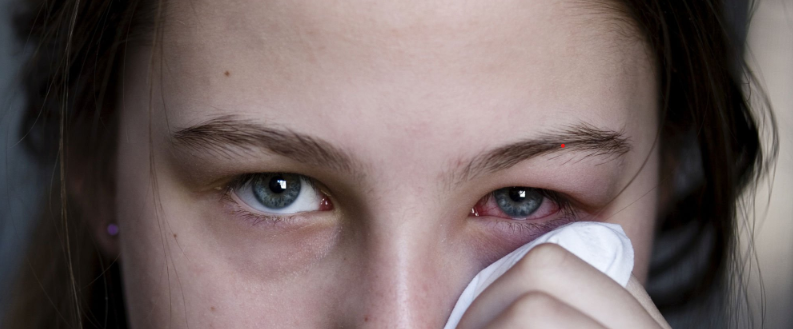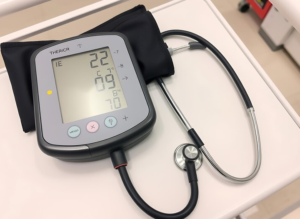Pink eye, or conjunctivitis, often conjures up thoughts of redness and irritation. This common condition can lead to discomfort and frustration for those dealing with it. But did you know that pink eye misdiagnosis is a frequent occurrence? Many people mistakenly attribute their symptoms solely to this seemingly straightforward ailment when, in reality, other underlying issues could be at play.
From allergies to dry eyes and even more serious conditions like uveitis, understanding the various causes behind eye redness is crucial for proper treatment. In this article, we will explore the common symptoms of pink eye while shedding light on its look-alikes that might confuse both patients and healthcare providers alike.

Common Symptoms of Pink Eye
Pink eye, or conjunctivitis, presents with a range of telltale symptoms. The most recognizable sign is the redness in one or both eyes. This increase in blood flow can make your eyes appear more irritated.
It often comes with itchiness and a burning sensation. Many people experience watery discharge that may form crusts during sleep. This can lead to difficulty opening the eyelids upon waking.
Some individuals report sensitivity to light, adding discomfort to an already irritating condition. A gritty feeling, as if there’s sand in the eye, is another common complaint.
If you notice any swelling around your eyes or eyelids, it could indicate inflammation associated with pink eye. Understanding these symptoms ensures that you recognize when professional evaluation might be necessary for accurate diagnosis and treatment options.
Other Conditions That May Be Misdiagnosed as Pink Eye
When experiencing pink eye symptoms, it’s crucial to recognize that not all cases of red or irritated eyes are due to conjunctivitis. Several conditions can mimic its appearance.
Allergies often present as redness and itchiness. Allergic conjunctivitis might resemble pink eye but typically comes with seasonal sneezing and runny nose. Understanding the difference is essential for proper treatment.
Dry Eye Syndrome can also cause similar irritation. It results from insufficient lubrication, leading to discomfort and redness without the infection associated with true pink eye.
Corneal abrasions, though painful, may be mistaken for conjunctivitis. These scratches on the cornea lead to significant discomfort and sensitivity to light, demanding immediate attention.
Being aware of these potential misdiagnoses helps ensure appropriate treatment and care for your eyes.
Allergies
Allergies are a common culprit behind eye irritation, often mistaken for pink eye. When allergens like pollen or pet dander enter the body, they trigger an immune response that can lead to symptoms similar to conjunctivitis.
Redness and itching are frequent signs of allergic reactions. Unlike bacterial or viral infections, allergies usually affect both eyes simultaneously. This dual redness can easily confuse someone into thinking they have pink eye.
Watery discharge is another symptom linked with allergies but differs from the thicker discharge seen in bacterial conjunctivitis. The treatment options also vary—antihistamines or allergy drops may provide relief without needing antibiotics.
Recognizing this distinction is crucial for proper management and getting back to comfort quickly. Allergic conjunctivitis isn’t just annoying; it’s a sign your body is reacting to irritants in your environment.
Dry Eye Syndrome
Dry Eye Syndrome is often overlooked when discussing eye issues. Many people mistake its symptoms for pink eye due to the irritation and redness involved.
This condition occurs when the eyes do not produce enough tears or when tears evaporate too quickly. The result? A persistent feeling of dryness, itchiness, and discomfort that can mimic conjunctivitis misdiagnosis.
Symptoms include a gritty sensation in the eyes, light sensitivity, and blurry vision. Unlike pink eye, which may be accompanied by discharge, dry eye typically does not present with yellow or green mucus.
Environmental factors such as wind, smoke, or prolonged screen time can exacerbate this syndrome. Those who wear contact lenses might find their discomfort intensified during flare-ups.
Understanding these distinctions helps in seeking appropriate treatment—essential for achieving relief from dry eyes while avoiding unnecessary confusion with other conditions like allergic conjunctivitis vs pink eye.
Corneal Abrasions
Corneal abrasions occur when the outer layer of the cornea gets scratched. This can happen due to various reasons, such as an accidental poke from a finger or foreign objects like dust and sand.
The symptoms often mimic those of pink eye. You may experience redness, tearing, and a sensation of something being stuck in your eye. The discomfort can be significant, leading many to mistakenly think it’s just conjunctivitis.
Unlike pink eye, which may improve with over-the-counter treatments, corneal abrasions usually require prompt medical attention. An eye care professional might prescribe antibiotic drops to prevent infection and relieve irritation.
Understanding these nuances is crucial for proper treatment. Misdiagnosis could lead to prolonged pain or complications if left untreated. Always seek clarity on your symptoms instead of assuming they are simply “pink eye.”
Importance of Correct Diagnosis
A correct diagnosis is crucial for effective treatment. Misdiagnosing conditions like pink eye can lead to inappropriate remedies, worsening symptoms, or prolonged discomfort.
Each condition has its own underlying causes and treatments. For instance, viral conjunctivitis may require different care compared to bacterial conjunctivitis. Mistaking one for the other could delay healing.
Moreover, many eye infections share similar symptoms with pink eye. Redness and irritation might arise from allergies or foreign objects in the eye. Without proper identification, you risk overlooking more serious issues such as uveitis or keratitis.
Understanding the distinction between these conditions empowers patients and healthcare professionals alike. It ensures that individuals receive tailored interventions that address their specific needs—ultimately fostering better outcomes for ocular health.
How to Properly Treat Pink Eye and Its Misdiagnosed Conditions
Treating pink eye effectively starts with an accurate diagnosis. For bacterial conjunctivitis, antibiotic eye drops are usually prescribed. It’s crucial to complete the full course even if symptoms improve.
If allergies are the culprit, antihistamines or corticosteroid drops can provide relief. Identifying allergens is essential for long-term management.
For dry eye syndrome, artificial tears work wonders. They help lubricate and protect the surface of the eyes from irritation.
Corneal abrasions require a different approach. Depending on the severity, your doctor may suggest topical antibiotics and possibly a patch to promote healing.
Never self-diagnose or treat based solely on symptoms like redness or irritation. Seek professional advice to determine whether it’s viral conjunctivitis or something more serious like uveitis or keratitis that needs immediate attention.
When in doubt about any redness in the eyes, prompt consultation with an eye care specialist is always advisable.
Prevention Tips
Preventing pink eye and its look-alikes starts with good hygiene. Regularly wash your hands, especially before touching your face or eyes. This simple step can significantly reduce the risk of infections.
Avoid sharing personal items like towels, pillows, or makeup. These can harbor bacteria and viruses that lead to irritation or infection.
If you wear contact lenses, practice proper care. Clean them as directed and avoid wearing them longer than recommended to prevent eye redness related to irritation.
Be mindful of allergens in your environment. Keeping windows closed during high pollen seasons can help mitigate allergic conjunctivitis symptoms.
Ensure routine eye exams are part of your healthcare regimen. Early detection is key in distinguishing between conditions such as dry eyes vs pink eye or uveitis vs conjunctivitis for effective treatment strategies.
Conclusion
Misdiagnosing pink eye can lead to unnecessary treatments or worsening of an underlying condition. Understanding the various causes of eye redness and irritation is crucial for effective diagnosis and treatment. Pink eye symptoms often overlap with those of other conditions, making it essential to consult a healthcare professional if you experience persistent discomfort.
By recognizing the differences between viral conjunctivitis, bacterial conjunctivitis, allergic conjunctivitis, dry eyes, and other look-alikes like styes or foreign objects in the eye, individuals can seek appropriate care promptly. Implementing prevention tips such as proper hygiene and avoiding allergens can also significantly reduce the chances of developing these issues.
Taking proactive steps toward your eye health will not only help alleviate current symptoms but also prevent future complications associated with misdiagnosis. Remember that your eyesight is invaluable—pay attention to any changes and don’t hesitate to reach out for expert advice when needed.



